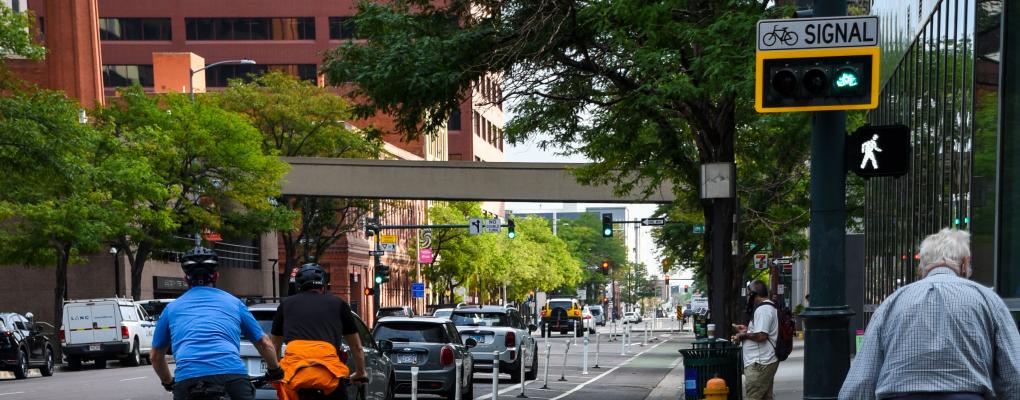Complete Streets

DRCOG has developed a Regional Complete Streets Toolkit for the Denver region. Complete Streets are safe, context-sensitive, inclusive, equitable and flexible. The Complete Streets approach gives pedestrians, cyclists, transit riders and other multimodal travelers the same access to safe and comfortable streets as motor vehicles.
Adopted by the DRCOG Board in October 2021, the toolkit provides guidance for local governments to plan, design and implement Complete Streets. The toolkit also:
- Supports the development of a safe and comfortable transportation network for all modes and all users.
- Promotes the use of the latest Complete Streets design criteria and guidelines.
- Establishes a vision for how local governments could adopt and apply a Complete Streets policy.
- Develops a multimodal street design typology to supplement the traditional functional classification systems by identifying design elements linked to all modes of travel.
- Provides guidance on a variety of street design measures available to local jurisdictions in planning and engineering safe and comfortable Complete Streets for all users of the regional transportation system.
Story Map and Prioritization Analysis
DRCOG staff has developed a story map to serve as a companion resource to the toolkit. The story map introduces the toolkit, describes the street typology and provides context around the 10 street types.
Current federal legislation includes a requirement to develop a Complete Streets prioritization plan that identifies a specific list of Complete Streets projects to improve the safety, mobility or accessibility of a street.
DRCOG worked with Toole Design Group to execute a prioritization analysis following adoption of the Regional Complete Streets Toolkit. The analysis illustrates locations in the Denver region scoring highest for being ideal areas to take action and invest in funding that addresses multiple planning priorities, including safety, accessibility and mobility.
This prioritization analysis is another tool member governments could use to identify priority project candidates for funding programs such as the Transportation Improvement Program and federal grant programs. The prioritization analysis can be found in the Prioritizing Complete Streets section of the story map.
